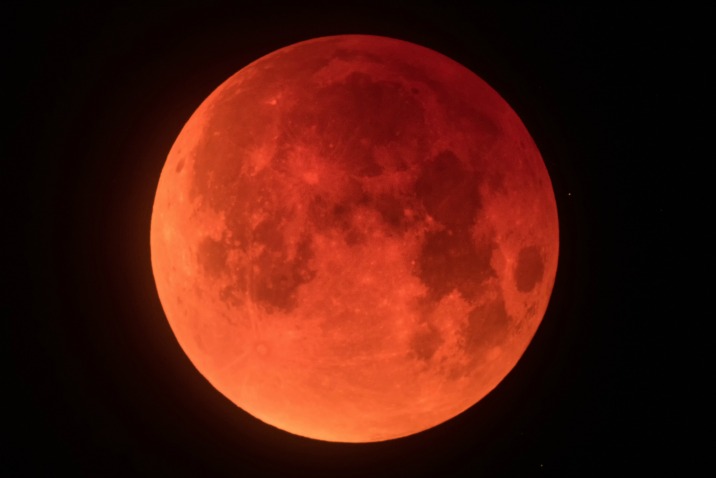For those in the Middle East, Asia, eastern Russia, Australia and New Zealand, the “super blue blood moon” will be visible during moonrise on the morning of January 31.

What is a ‘super blue blood moon’?
It may sound like the apocalypse is nigh, so let’s break it down by its three parts: “super,” “blue” and “blood.”
So, a “supermoon” is when a full moon occurs at the same time as its perigee, the closest point of the moon’s orbit with Earth. The result: the moon appears larger than normal and NASA is predicting this one will be 14% brighter than usual.
Chances are you have used the phrase “once in a blue moon” — but have you ever wondered where it came from? The well-known idiom actually refers to the rare instance when there is a second full moon in a calendar month. The first supermoon of 2018 which took place on New Year’s Day was previously described by NASA as the “biggest and brightest” one expected for the entire year.
Then completing this “lunar trifecta” is the “blood” element. Although it does not have a scientific definition, a “blood moon” occurs during a lunar eclipse when faint red sunbeams peek out around the edges of the moon, giving it a reddish, copper color.
Where can I see it?
People in the Middle East, Asia, eastern Russia, Australia and New Zealand, the “super blue blood moon” will be visible during moonrise on the morning of January 31.
As long as the weather doesn’t try to ruin things, observers in Alaska, Australia, eastern Asia and Hawaii will be experience the whole phenomenon from start to finish.
Where the moon is covered by the Earth’s shadow, known as the period of totality, it will last just over one and a quarter hours, according to EarthSky. And unlike a solar eclipse, a lunar eclipse is perfectly safe to watch in the night with the naked eye.
And fear not luna-tic’s, Virtual Telescope will be streaming the event live for those of you unable to view it up close.
There are usually a couple of lunar eclipses each year so if you do miss it this time around, the next one will happen on July 27.
Source: CNN.COM